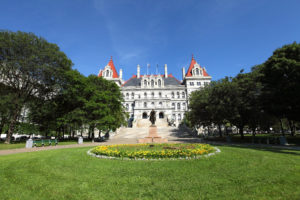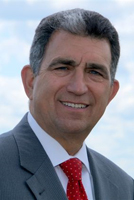
N.Y. bill would hold shops to OEM procedures but keep alternative parts laws
By onAssociations | Insurance | Legal | Repair Operations | Technology
A bill introduced Friday would allow New York alternative parts laws to stand but otherwise require auto body shops to adhere to OEM repair procedures.
Assembly Bill 8050 was sponsored by Assemblyman William Magnarelli, D-Syracuse, and championed by the Long Island Auto Body Repairman’s Association. It currently sits before the Assembly Insurance Committee.
“Not withstanding any provision of law to the contrary, no motor vehicle repair shop shall deviate from the collision repair guidelines, procedures, recommendations and service bulletins issued by a vehicle or original equipment manufacturer in the repair of a collision damaged vehicle without the written authorization from the vehicle owner or the vehicle owner’s authorized representative,” AB 8050 would add to the state vehicle and traffic law.
This would let stand laws like New York 3 CCR 398-D, which describes how auto body shops should communicate various types of parts (such as aftermarket) to consumers.
The bill also establishes a similar rule for insurers.
“No insurer shall directly or indirectly require the deviation from the collision repair guidelines, procedures, recommendations and service bulletins issued by a vehicle or original equipment manufacturer in the repair of a collision damaged vehicle without the written authorization from the vehicle owner or the vehicle owner’s representative,” AB 8050 also adds to the state’s insurance law. “If a repair procedure or specification from a vehicle or original equipment manufacturer includes a directive to conduct a scan, calibration, diagnostic test of vehicle electronic systems before or after the commencement of repairs, such directive shall be considered as a required part of the repair procedure.”
Automakers generally only recommend their own new parts on the grounds they can’t vouch for the performance of other used, imitation or refurbished components.
Similar repair procedure bills filed this session across the country have been divided on an exemption from that OEM guidance.
LIABRA Executive Director Edward Kizenberger said Monday the New York exemption was meant to keep the contentious issue of parts selection from bogging down the goal of correct repairs.
The Alliance of Automobile Manufacturers itself has backed such exemptions, calling the overall goal of safe repairs more important than battling over which parts can be used in those repairs.
Fellow OEM repair procedure legislation advocate Automotive Service Association has told lawmakers: “To be clear, ASA does not support the use of OEM parts only. ASA’s interest is in requiring the industry to adhere to a set of repair procedures that assure the best opportunity for vehicle safety on our highways.”
Parties like United Recyclers Group and LKQ, who’ve opposed various repair procedure bills over fears of an OEM parts monopoly, have said they don’t object to the procedures describing how parts should be installed and repaired, merely the procedures indicating whose parts should be used. (LKQ also objects to tooling requirements, a lobbyist has said.)
“Modern automobiles are equipped with a variety of electronic features designed to promote safety, examples include: blind spot monitoring, front collision prevention and lane assistance,” a justification accompanying the bill on the New York Legislature’s website states. “When these systems are damaged in a collision, the OEM has very specific procedures for the repair of the vehicle and these systems. Failure to follow those procedures could result in their failure, endangering drivers in the process. Many automotive repair shops report that insurance companies are pressuring them to disregard OEM procedures to lower the cost of repairs.
“This legislation forbids repair shops from deviating from OEM collision repair guidelines, procedures, recommendations and service bulletins without the written consent of the vehicle owner. It also forbids insurance companies from requiring repair shops do the same. This will ensure that vehicles are repaired properly and drivers can trust the reliability of these safety systems in the car after a collision.”
In related news, Magnarelli also this session sponsored AB 3872, which requires new OEM parts during “the year of manufacture and for the two succeeding years thereafter, or for the duration of the vehicle manufacturer’s new-vehicle and/or sheet-metal or body parts warranty, whichever is longer.”
Alternative parts can’t by themselves void an OEM warranty. However, if those parts fail and affect something else, OEMs aren’t required to cover the other item or system under warranty.
The same three-year restriction on alternative parts would apply to insurers under AB 3872. After that, insurers would be on the hook for any additional costs related to using non-OEM components.
“In the event replacement crash parts are used or installed which are other than new original equipment manufacturer (OEM) replacement crash parts, and such parts are ill-fitting and require additional labor and materials in their installation or use, the insurer shall be responsible for the cost of such additional labor and materials,” the bill states.
New York 11 CRR 216.7 already permits insurers to write for aftermarket “crash parts” so long as the components meet certain conditions. (For example, the parts must be certified.)
AB 3872 has numerous co-sponsors. It has sat in the Assembly Transportation Committee Magnarelli chairs since its introduction Jan. 31.
Be heard: New York lawmaker contact information can be found here and here.
Images:
New York Assemblyman William Magnarelli, D-Syracuse. (Provided by New York Legislature)
The New York Capitol is shown. (DenisTangneyJr/iStock)

